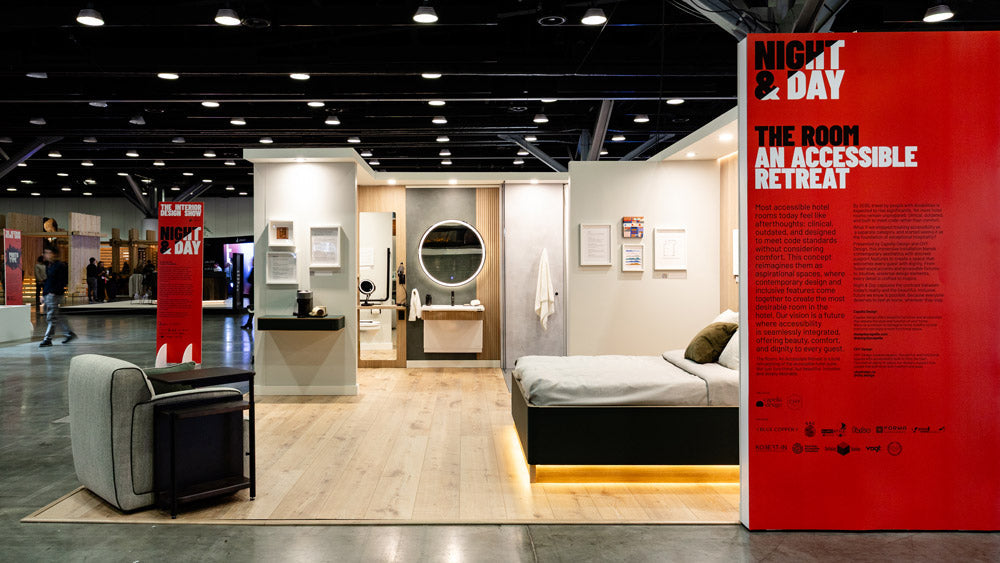
Spotting Challenges: Seeing What Others Don't
After the holidays, many of us leave with warm memories—and sometimes, a new awareness of the challenges our loved ones face in their homes. In fact, many care organizations and occupational therapists see a significant increase in outreach from concerned friends and family members in January.
For those who live with or see friends and family members every day, it can be hard to notice gradual changes in mobility or behavior. When small changes occur over time, it's easy for the routines of life to mask these shifts - like someone avoiding stairs or leaning on counters.
But when less frequent visitors come into the home, like over the holidays, it can be easier to see what others don’t—adjustments that signal a need for support.
Taking action, even if it’s difficult, is a sign of care.
Common Signs of Accessibility Needs

Recognizing accessibility challenges starts with observing subtle shifts in how your loved ones move through their homes and complete everyday tasks.
Occupational therapists often look for early early indicators of mobility or environmental barriers that may need addressing.
Here are a few signs they look for:
Reliance on furniture or walls for support:
A loved one subtly leaning on tables, countertops, or walls to steady themselves could indicate balance or mobility challenges.
Hesitation or avoidance of certain areas:
Skipping upstairs bedrooms, avoiding outdoor steps, or limiting movement to specific rooms may reflect difficulties navigating their environment.
Fatigue during simple tasks:
Increased rest periods while cooking, cleaning, or walking between rooms might point to reduced stamina or joint pain.
Rearranged spaces or unused rooms:
A living room modified to open pathways or an abandoned favorite chair may indicate efforts to adapt to physical limitations.
Difficulty using household items:
Struggling to open jars, reach shelves, or use everyday appliances may highlight dexterity issues or barriers.
Changes in cleanliness or maintenance:
A previously well-maintained home that now shows signs of neglect, like piles of items on the stairs or poorly maintained plants, may point to challenges in managing daily routines.
Physical signs of strain or discomfort: Frequent rubbing of joints, difficulty sitting or standing, or visible signs of pain during movement could indicate physical challenges.
Noticing changes in how your loved ones navigate their homes doesn’t always mean there’s an immediate problem to solve. Everyone moves through their space in their own way, and these shifts might simply reflect personal habits or preferences. However, paying attention to these observations is an act of care.
Taking time to reflect on what you’ve noticed can provide clarity and direction.
Preparing the Discussion: The ACT Model

When you have a concern about a loved one, it can be hard to figure out what to do next. After speaking to caregivers and occupational therapists, we learned that action begins with the ACT Steps: Assess, Collaborate, Trust.
Assess:
Reflect on what you’ve observed. Write down the changes you noticed, no matter how small. These details help your organize your thoughts and can help create a clearer picture of potential issues.
Here are a few questions to guide you:
- What movements or behaviors stood out the most?
- What actions seemed difficult to perform?
- What frustrations did you see?
Organizing what you've observed can help you better better understand if there is an issue, and the urgency.
Collaborate:
Reach out to other family members, friends, or neighbors who may spend more time with your loved one and get their input. Have they observed similar changes or have concerns of their own?
Learning other people's perspective helps build a fuller understanding of the situation and ensures your next steps are well-informed.
(Build) Trust:
Many people are reluctant to hear feedback about mobility challenges, and they may feel defensive or even threatened by the topic. Use what you’ve gathered and create a plan to start an open, supportive dialogue.
Focus on how to bring up your observations in a way that feels caring and collaborative, emphasizing that the goal is to help, not criticize. Building trust ensures that your loved one feels understood and is more likely to engage in meaningful discussions about potential next steps.
By noticing changes and addressing them thoughtfully, you show your loved ones that their comfort and independence matters. It’s not about fixing what’s wrong—it’s about honoring their needs and creating a home where they feel supported and seen.
And while it may feel uncomfortable, taking action to support accessibility is, at its core, an incredible act of care.
Looking Ahead: Starting the Conversation

Reflecting on what you’ve observed is an important first step, but meaningful change begins with a conversation.
In the next post, we’ll explore how to approach these discussions with care, empathy, and practical tools to ensure they feel collaborative and empowering.
Together, we can turn observations into action, creating homes that honor both style and independence.
Whether you’re new to the Capella Design community or not, we thought folks could use an update on what we’ve been up to this year. And was it ever a lot! From joining the permanent collection of a museum to winning a design award, here’s what you need to know about how Capella Design is creating distinction in the design-forward mobility product category.
- Incorporating premade food, whether that means ordering out or store bought sides and desserts
- Opting for gift bags over wrapping paper
- Sending calls or texts instead of holiday cards
- Saying no to gatherings causing caregiving strain (or that you just aren’t excited to attend!)
Put Yourself First
Prioritize your well-being this holiday season by scheduling regular self-care activities—whether that is a long walk, your favorite treat, or some uninterrupted time alone. As the saying goes, “put your oxygen mask on first before assisting others.”Remember that taking care of yourself is not selfish; it's an essential part of being an effective caregiver, so carve out time for activities that bring you joy and relaxation.
Let Your Home Help You Out
Organizing and preparing the home for a more accessible holiday season will create an environment that is both festive and conducive to caregiving responsibilities.Check out our post with tips on how to make your home more accessible for the holidays. These small changes can help you ensure a safe and comfortable space for you and your loved ones, alleviating a significant factor in caregiving stress.


Get customer attention by clean visual and video
Make it easy to buy by eliminating stumbling blocks to purchase. Don’t assume customers know which item you’re talking about in your post. Provide a link directly to the product page or just link the product to your blog so they can buy if they want. If it relevant give readers more than one way to get to the product.
Article credit: Heidi Cohen



